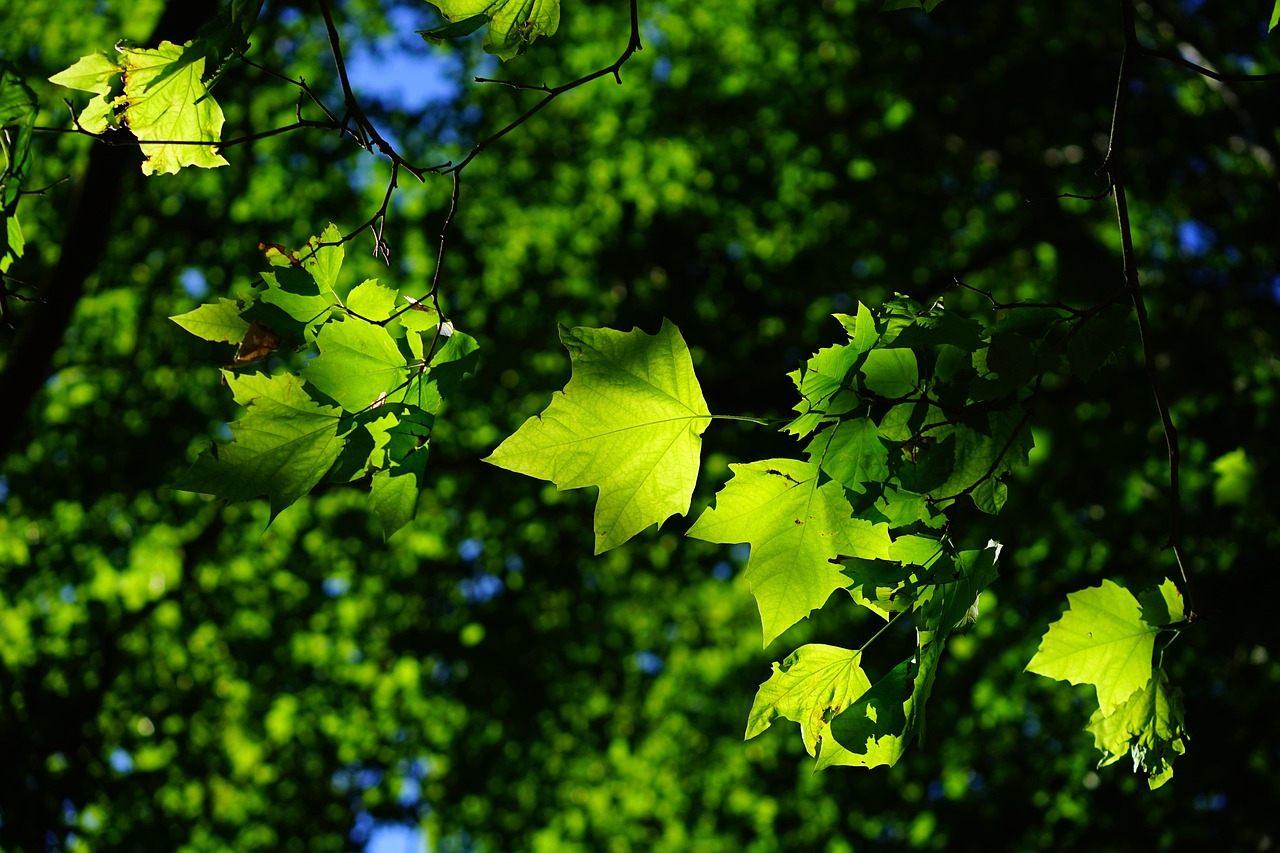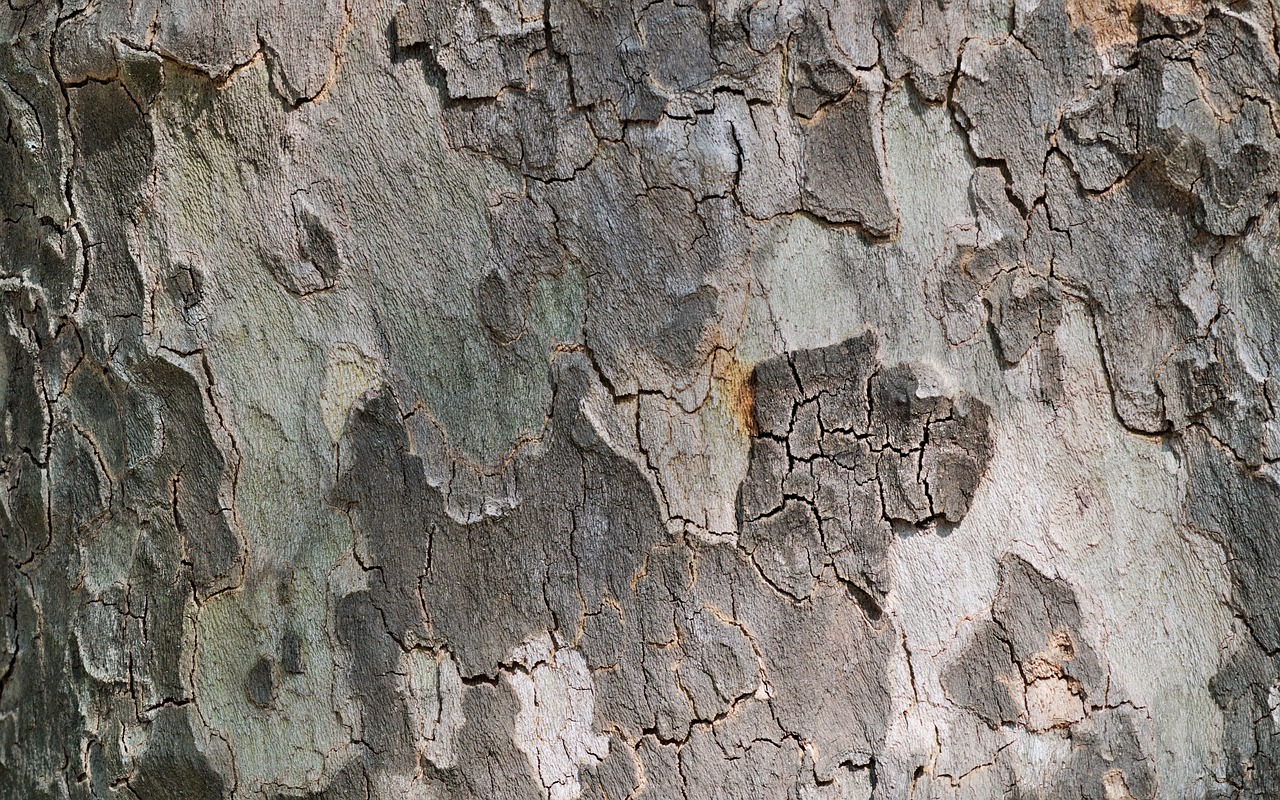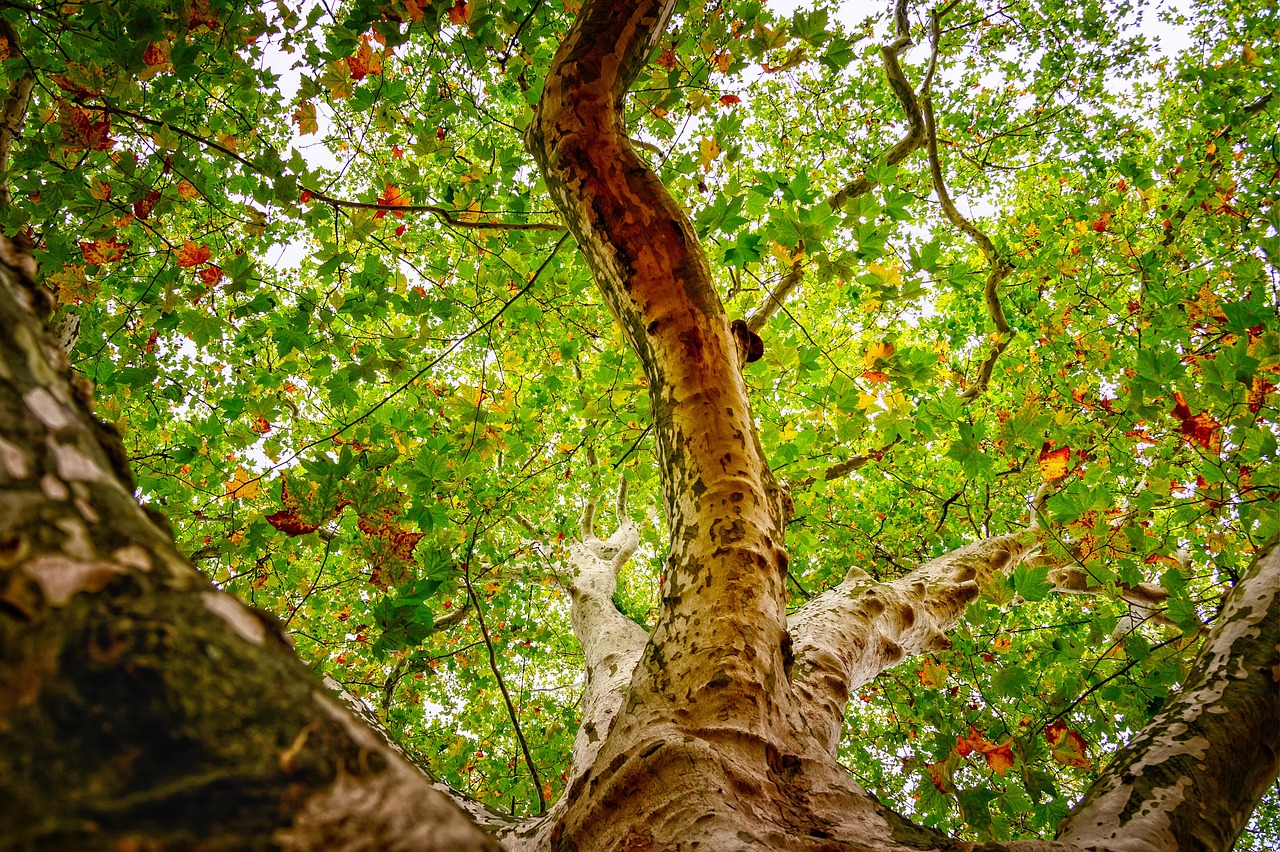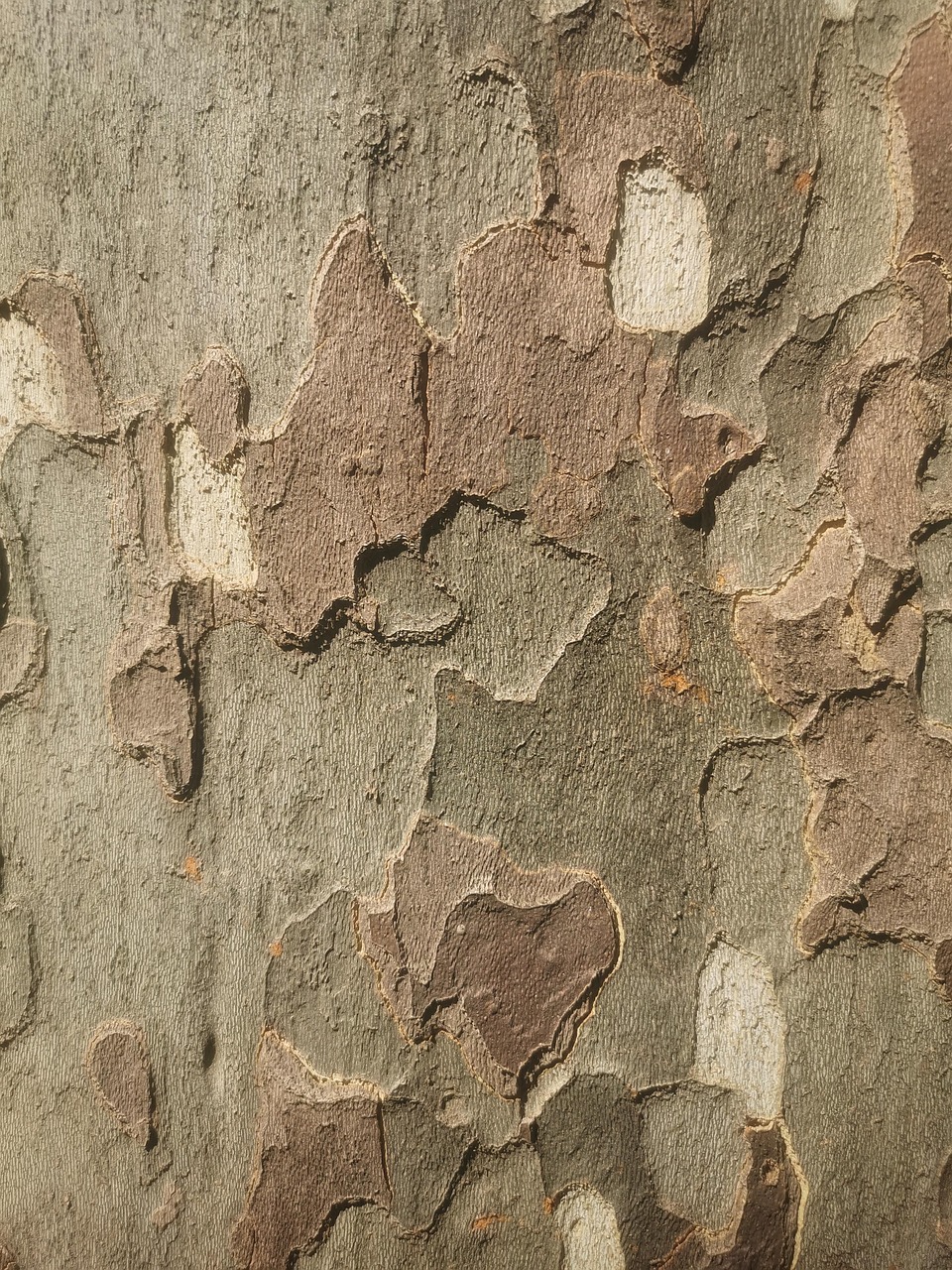Sycamore bark shedding is a natural process that occurs as the tree matures. This shedding helps the tree grow by allowing it to replace old, damaged bark with new layers. It is a vital part of the tree’s health and overall life cycle.
The sycamore tree, known scientifically as Platanus occidentalis, is a majestic species native to North America. Renowned for its broad canopy and distinctive bark, the sycamore can reach heights of up to 100 feet. One of the most striking features of this tree is its bark, which displays a unique exfoliating characteristic. As sycamores grow, they naturally shed their outer bark in strips or plates, revealing a smooth, pale inner layer beneath.
This shedding process typically occurs during the spring or early summer months. Several factors influence when and how much bark is shed, including the tree’s age, environmental conditions, and overall health. It is essential for potential sycamore tree owners or enthusiasts to understand this process as it plays a significant role in maintaining the tree’s vitality.
Understanding Bark Shedding

Bark serves several critical functions for trees, including protection from pests, diseases, and environmental stresses. The outer bark of the sycamore tree acts as a shield against harsh weather conditions and acts as a barrier to harmful organisms. As the tree grows, this outer layer becomes less effective, necessitating its removal. Shedding allows for the development of new, healthy bark that can better fulfill these protective roles.
This natural process can be fascinating to observe. The shedding often occurs in large pieces, which can create a beautiful aesthetic effect as the tree reveals its lighter-colored inner bark. Many people find this characteristic visually appealing, adding to the sycamore’s charm in landscaping settings.
There are several reasons why understanding the bark shedding process is essential. Here are some key points:
- Tree Health: Shedding old bark helps prevent diseases and pests from taking hold.
- Aesthetic Value: The contrast between old and new bark enhances the visual appeal of the tree.
- Environmental Adaptation: Shedding allows the tree to adapt to changing environmental conditions.
- Growth Support: New bark supports continued growth by allowing for better nutrient transport.
It is crucial to note that not all trees shed their bark in the same way. While sycamores exhibit a pronounced shedding process, other species may have more subtle or different methods of bark renewal. Understanding these differences can enhance appreciation for various tree species and their unique adaptations.
In addition to its natural process, the timing and extent of bark shedding can also be influenced by external factors. Stressors such as drought, soil quality, and temperature fluctuations can impact how trees shed their bark. For instance, trees experiencing stress may shed bark more frequently or in larger pieces than healthy trees.
Furthermore, sycamore trees are often found in riparian zones, areas near rivers or streams. This habitat provides ample moisture, which can promote healthy growth and shedding patterns. However, planted sycamores in urban settings may face different challenges that can affect their shedding process.
| Factor | Impact on Shedding |
|---|---|
| Age of Tree | Older trees tend to shed more frequently. |
| Environmental Conditions | Drought or excessive moisture can alter shedding patterns. |
| Soil Quality | Nutrient-rich soil promotes healthier growth and shedding. |
| Temperature Fluctuations | Extreme temperatures may stress trees and affect bark health. |
Recognizing these factors can help tree owners provide better care for their sycamores, ensuring they thrive and maintain their unique characteristics throughout their life cycle.
Factors Influencing Bark Shedding
Understanding the factors that influence bark shedding in sycamore trees is crucial for maintaining their health. As mentioned previously, environmental conditions play a significant role. However, several other factors can also affect the shedding process.
Tree Age and Growth Stage
The age and growth stage of a sycamore tree significantly influence its bark shedding pattern. Young trees typically have smoother bark that does not shed as frequently. As the tree matures, it develops more pronounced bark characteristics. These changes can be categorized into stages:
- Juvenile Stage: In this stage, the bark is relatively smooth and does not shed much.
- Mature Stage: As the tree reaches maturity, it begins to shed its outer bark in larger pieces.
- Old Age: Older trees may experience increased shedding as they replace aging bark that no longer serves its protective function.
The transition between stages is natural and indicates healthy growth. Understanding these stages helps in predicting when shedding will occur and how it may impact the tree’s overall appearance.
Health of the Tree
The overall health of a sycamore tree will also affect its bark shedding process. A healthy tree will exhibit a regular shedding pattern, while a stressed or diseased tree may show irregular or excessive shedding. Here are some health indicators to consider:
- Leaf Color: Healthy leaves are typically vibrant green. Yellowing or browning may indicate stress.
- Growth Rate: A steady growth rate is a sign of a healthy tree. Stunted growth may signal issues.
- Pest Damage: The presence of pests can lead to bark damage and irregular shedding.
Regular monitoring of these indicators can help in providing timely interventions to maintain the tree’s health.
The Importance of Bark Health
Bark health is essential for the overall well-being of any tree, including sycamores. The bark not only serves as a protective layer but also plays a role in nutrient transport and moisture retention. Here are key aspects of bark health to consider:
Protection Against Pests and Diseases
The outer bark acts as a barrier against various pests and diseases. When bark is damaged or unhealthy, it can become susceptible to infestations. Some common pests that target sycamores include:
- Sycamore Lace Bug: This pest feeds on the leaves, causing discoloration and stress.
- Wood Borers: These pests bore into the bark, weakening the tree structure.
- Fungal Infections: Unhealthy bark can lead to infections that affect the entire tree.
Maintaining healthy bark through regular monitoring and care can help prevent these issues from taking hold.
Nutrient Transport
Bark also plays a vital role in transporting nutrients throughout the tree. The cambium layer, located just beneath the bark, is responsible for producing new cells for both bark and wood. When bark is shed, this layer remains active, ensuring continuous growth and nutrient distribution.

Caring for Sycamore Trees
Proper care for sycamore trees can enhance their health and improve their bark shedding process. Here are some tips for maintaining your sycamore:
- Watering: Ensure adequate watering during dry periods to support healthy growth.
- Soil Management: Test soil quality and amend it with organic matter as needed to enhance nutrient availability.
- Pest Control: Monitor for signs of pests and take action promptly to mitigate damage.
- Pruning: Regular pruning can help improve air circulation and overall tree health.
Caring for your sycamore not only promotes healthy bark shedding but also contributes to the overall vitality of the tree.
In conclusion, understanding the factors that influence bark shedding in sycamore trees can lead to better care practices and healthier trees. By recognizing the importance of tree age, health, and environmental conditions, owners can ensure their sycamores thrive for many years.
Common Myths About Bark Shedding
As with many natural processes, there are several myths surrounding the bark shedding of sycamore trees. Understanding the truth behind these myths can help homeowners make informed decisions regarding tree care and maintenance.
Myth 1: Bark Shedding is a Sign of Disease
One common misconception is that bark shedding indicates the presence of disease. While it is true that unhealthy trees may shed bark irregularly, bark shedding in sycamore trees is a normal and natural process. Healthy trees will shed their bark to make way for new growth. Therefore, observing bark shedding should not immediately raise alarm unless accompanied by other concerning symptoms, such as discoloration or excessive leaf drop.
Myth 2: Shedding Occurs Only in Spring
Another myth is that bark shedding only takes place during the spring months. In reality, while spring is a common time for shedding to occur due to increased growth activity, sycamores can shed bark at various times throughout the year. Factors such as environmental stress, age, and health can influence the timing of shedding, making it variable rather than fixed.
Myth 3: Bark Shedding Harms the Tree
Some believe that bark shedding can harm the tree and expose it to danger. However, this process is essential for the tree’s health and longevity. The old bark is often cracked or damaged, making it less effective in providing protection. By shedding this outer layer, sycamores can form new, healthy bark that better supports the tree’s functions.
Benefits of Bark Shedding

Bark shedding provides numerous benefits to sycamore trees, contributing to their overall health and vitality. Understanding these advantages can further emphasize the importance of this natural process.
Improved Protection
New bark is typically stronger and more resilient than older bark. As sycamores shed their outer layers, they enhance their protection against environmental factors, pests, and pathogens. New bark can better withstand harsh weather conditions and acts as a barrier against insects and diseases.
Enhanced Growth
The shedding process allows for improved nutrient transportation within the tree. As new bark develops, it supports the cambium layer, which is responsible for generating new cells. This ongoing growth ensures that the tree continues to thrive and reach its full potential.
Aesthetic Appeal
The visual transformation that occurs during bark shedding adds to the aesthetic appeal of sycamore trees. The contrast between the rough, dark outer bark and the smooth, lighter inner bark creates an attractive appearance that many find appealing in landscaping designs.
Environmental Considerations
The environment in which a sycamore tree grows significantly affects its shedding patterns and overall health. Understanding these environmental factors can help in selecting suitable planting locations and care strategies.
Soil Composition
The type of soil where a sycamore is planted plays a crucial role in its health. Sycamores prefer well-draining soil with good organic content. Poor soil conditions can lead to stress and affect the tree’s ability to shed bark effectively. Testing soil pH and nutrient levels can provide insights into necessary amendments for optimal growth.
Climate Conditions
Sycamores thrive in various climates but generally prefer moderate conditions. Extreme temperatures, either hot or cold, can impact their growth and shedding processes. Prolonged exposure to unfavorable climate conditions can stress the tree, leading to irregular shedding patterns or even damage.
Recognizing Signs of Stress

While bark shedding is a natural process, recognizing signs of stress is equally important for maintaining healthy sycamore trees. Homeowners should be aware of the following indicators:
- Wilting Leaves: Leaves that appear wilted or dry may indicate stress due to lack of water or nutrient deficiency.
- Bark Cracks: Excessive cracking or peeling of bark can signal underlying health issues.
- Pest Infestations: Visible pests or signs of damage on leaves or bark may require immediate attention.
- Unusual Shedding Patterns: An increase in shedding outside of normal seasonal changes can be a red flag.
By monitoring these signs regularly, homeowners can take proactive measures to ensure their sycamore trees remain healthy and vibrant.
Additional Considerations for Sycamore Care
In addition to recognizing signs of stress, there are several other considerations for ensuring the health and longevity of sycamore trees. These aspects can enhance the overall care strategy for these magnificent trees.
Mulching Techniques
Applying mulch around the base of a sycamore tree can provide many benefits. Mulching helps retain soil moisture, suppresses weeds, and adds organic matter as it decomposes. Here are some tips for effective mulching:
- Choose Organic Mulch: Options like wood chips, bark, or straw are excellent choices as they enrich the soil.
- Apply Adequately: A layer of 2-4 inches is typically sufficient, but avoid piling mulch against the trunk to prevent rot.
- Refresh Regularly: Replenish mulch as it decomposes to maintain benefits over time.
Seasonal Maintenance Practices
Seasonal maintenance is crucial for the health of sycamore trees. Different times of the year present unique challenges and opportunities for care:
- Spring: This is the best time to assess growth and apply fertilizers if needed. Pruning can also be done to remove any dead or diseased branches.
- Summer: Monitor watering needs during hot months. Ensure that trees are getting enough moisture, especially in dry seasons.
- Autumn: Rake fallen leaves to prevent buildup and potential pest habitats. Fall is also a good time to inspect for any signs of disease or damage.
- Winter: Protect young trees from extreme cold and frost. Wrapping trunks can help prevent damage from harsh winter conditions.
Final Thoughts
Understanding the bark shedding process in sycamore trees is essential for any tree owner or enthusiast. This natural phenomenon serves vital functions, such as enhancing protection, promoting growth, and improving the tree’s overall health. By recognizing the factors influencing this process—such as tree age, environmental conditions, and health indicators—homeowners can take proactive steps to care for their sycamores effectively.
It is important to dispel myths surrounding bark shedding, as this knowledge fosters a deeper appreciation for these magnificent trees. Recognizing signs of stress enables timely interventions that can save a tree from more serious issues down the line. Additionally, implementing proper care techniques—such as mulching and seasonal maintenance—can enhance the vitality of sycamore trees, allowing them to thrive in their environment.
In conclusion, with adequate understanding and care, sycamore trees can provide beauty, shade, and ecological benefits for many generations. Embracing their natural processes, including bark shedding, ensures that these trees remain a cherished part of the landscape.
